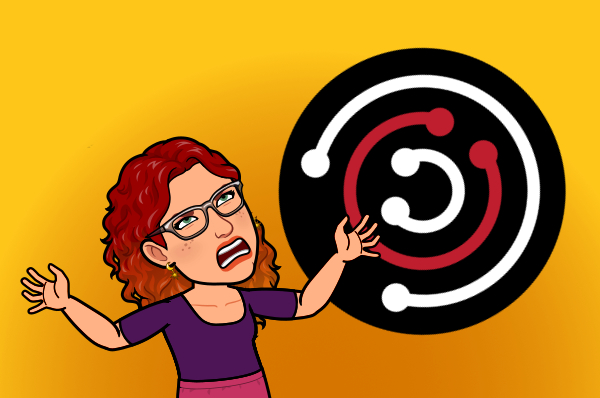Why are wizard staffs always topped with a giant glowing topaz? Cause it’s a vimstone, obviously! It’s an essential wizard’s tool that provides power to their spellwork and details to our setting.
One of my favorite worldbuilding tricks is to describe the very basics of things, the tools and techniques that might otherwise be overlooked as “mere color.” You can explore where those things come from, how they’re made, how they’re used, and how they interact with other setting elements. Most importantly, you can dig into how they might go wrong and create terrible catastrophes and fun drama. All of that fleshes out your setting in really satisfying ways.
So let’s check out vimstones, shall we?
—
VIMSTONE

Created from a precious gem, a vimstone is a vessel for spiritual power. Once imbued, the vimstone glows faintly, and can hold that power for some time. Most vimstones last for weeks; masterwork vimstones can retain power for years or even decades. In the hands of a wizard, a charged vimstone can lend its power to bolster spellwork, although this depletes the stone’s power in whole or in part.
The vimstone is a relatively recent invention, having been in circulation for less than a century. A number of cities in Outland and Kharzan claim to be where the first stable vimstone was created, although the reality is probably a matter of concurrent research bearing fruit in multiple workshops. Wherever its origin, the process of vimstone creation spread widely and quickly, resulting in a minor revolution in wizardry’s practices and applications.
Vimstones are often carried by wizards and incorporated into their tools and personal effects. This is so common that the typical wizard’s staff as depicted in art is almost always topped by a glowing gem. The symbol of office of the Arcane Mysterium’s archmage is a staff in the shape of a hissing python whose eyes are both vimstones. The stones may also be worked into enchanted items, such as a bejeweled wyvern saddle that improves the mount’s disposition and complicity. The enchantment is maintained as long as the vimstone remains charged.
Charging a vimstone is a matter of simple spellwork tranferring spiritual power from a source and into the stone. Stray will-o-wisps may be captured for this purpose, or sacrifices (non-lethal or otherwise) can provide the charge. Some wizards imbue stones with their own anima, ‘banking’ that power and letting their own spiritual power regenerate normally. Vimstones will also passively draw power from ley lines they are near.
The natural world interacts with vimstones in sometimes surprising ways. Plant growth tends to accelerate in the presence of charged vimstones, and more than one forgotten stone dropped near the base of a sapling has been engulfed within the trunk of the resulting tree. Genius loci may find vimstones curious or abhorrent, depending on their personality. Quickfinches in particular are attracted to vimstones, and have been known to fly off with smaller stones in their beaks.
Charged vimstones can activate dormant wizardries, especially those created before the invention of the vimstone. These ancient magics draw power from vimstones the same way they would normally consume will-o-wisps or ritual sacrifices. Normally this requires physical contact between the stone and the enchanted object, but other interactions are possible. The calendar stones of Zinclum drain any vimstone within their circle, producing an astounding lightshow in the sky detailing celestial mechanics.
The production of a vimstone is delicate; poorly-constructed vimstones leak their power into their surroundings. This stray power may manifest as an intermittent keening, heat, or other recurrent effect; others simply discharge entirely when jostled. The resulting wash of power may be nothing more than a dazzling display of light, but may also spontaneously conjure flames, material, or concussive force.
A large number of faulty vimstones may produce a cascade effect as one failure prompts other stones to fail, which in turn triggers even more stones to fail. It is speculated but unproven that even well-constructed vimstones may fail within such a chain reaction, which is why vimstones are no longer transported en masse. A vimstone cascade occuring within the inventory of a travelling trader is one of the many theories on the destruction of the Gracia Span.
